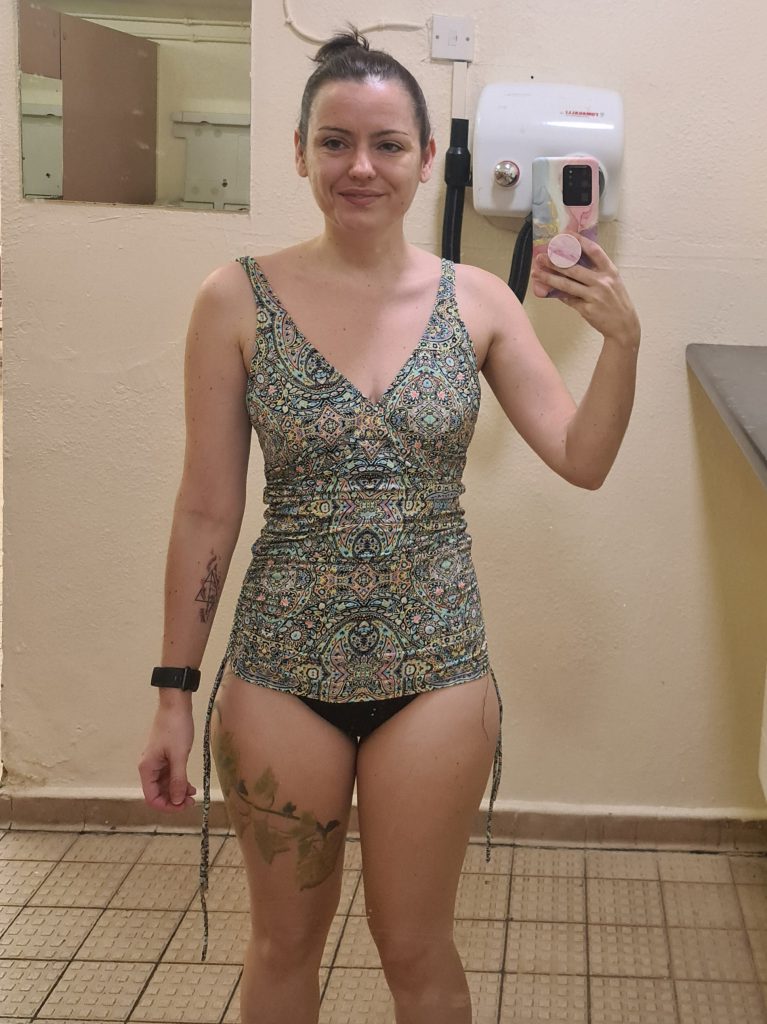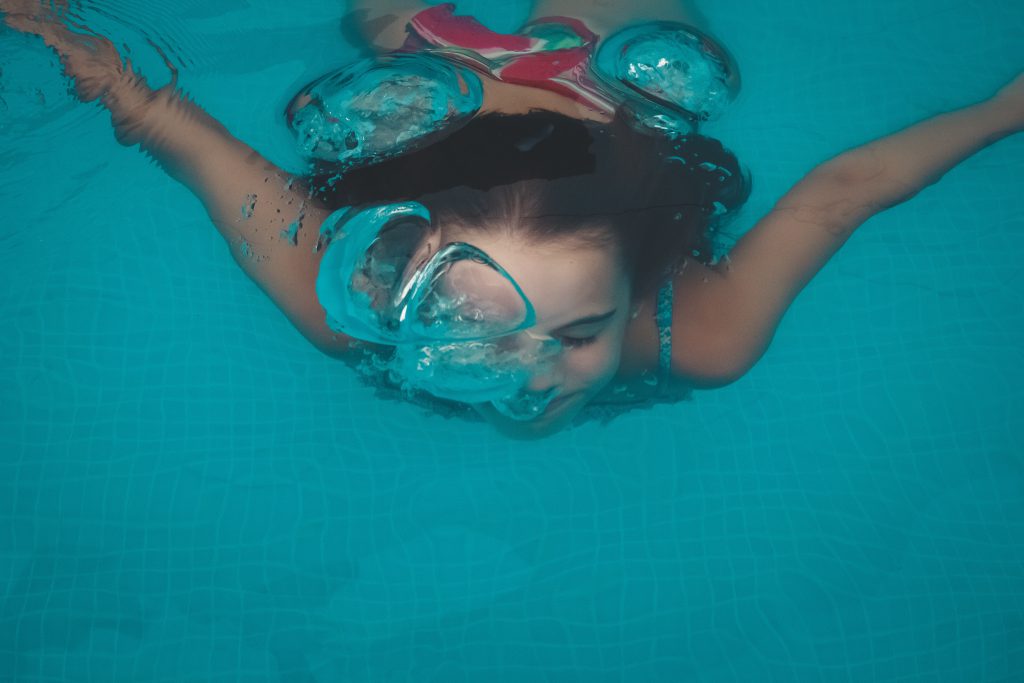
I recently started swimming again, so, I wanted to write a blog to share my experience and tips for those who are thinking about going.
When I had my first ileostomy in 2007, I actually thought I wasn’t able to go swimming with a stoma. I imagined my bag would just float off me in the chlorinated water! That said, I didn’t have a good time with the stoma pouches that were available back then. I was constantly dealing with leaks and sore skin, so I didn’t really feel secure any of the time! Anyway. I am now swimming twice a week – yay me!
Concerns about swimming with a stoma
You might have some apprehensions, like I did, about swimming with a stoma. Let’s address some of the most common ones.
Will my ostomy bag stay on?
Yes. If you shower or bath with your bag on, you probably already know how your baseplate reacts to being wet. Some may stay perfectly stuck with no issues. Or, you might need to try some flange extenders. Again, different ones react differently to being wet. I’ve tried different bags in the past, and some of the baseplates absorb the water, leaving the edge slimy and swollen. You can order sample flange extenders yourself, or speak to your stoma nurse who can do it for you.
Will it fill up with water?
Not so long ago, the recommendation was to put one of the filter stickers (which are included in the box of bags) over the filter before submerging your bag in water. Fittleworth stoma care nurse, Julie, talked about swimming during the Q&A Session of the body confidence webinar series: “The filters on the modern stoma bags don’t need to be covered up.” But if you’re unsure, it won’t do any harm to pop one on for peace of mind.
Will people be able to see my bag?
If you don’t want people to see your bag, have no fear! There’s lot of ostomy swimwear available now, usually designed to conceal the bag. This may include high waists, patterns, frills, and internal pockets!
Do I need to change my bag after swimming?
This is simply personal preference. If you can dry your bag enough to be comfortable, then go ahead! Always take a spares kit, just in case. I would advise taking one with you EVERYWHERE, regardless of how long it’s been since you’ve experienced a leak. Sometimes, it can be a simple manufacturing fault, which no one can predict!
If you decide you would like to do your bag change there, there’s usually an accessible toilet/baby changing, and larger changing cubicles. Just pop your waste bag into the nappy disposal, and you’re good to go!

My experience of swimming with a stoma
I couldn’t decide whether I wanted to change my bag after the swim, at the leisure centre, or whether to wait until I got home. The changing rooms are very hot and humid, which doesn’t feel like the right environment for a secure bag change. Heat can affect the adhesive on the baseplates anyway, and being hot and clammy is not going to achieve the best adhesion possible. So, I decided that I would have a good shower after swimming, then dry my bag off as best as I could and just change it at home. This method has worked well so far, for me! I have just been using a towel to dry my bag, but you might find that an accessible toilet has a private hand dryer that might help!
I have some ostomy swimwear, but I’m happy to swim in anything. My bag being seen is not something I worry about anymore. It is what it is. I am what I am! I do like to cover up the actual bag because when it’s wet, it becomes see-through. I don’t want people to have to see my poo. I wouldn’t want to see anyone else’s. Bag covers are available from lots of places – just do a quick Google search!
My bag stays completely stuck, no water gets in, and I’ve not felt like anyone notices my bag. All in all, a good experience, and enjoyable exercise!
We hope you enjoyed this article from our guest blogger. They are expressing their views or knowledge on a topic because of their experience & background. Some of the opinions expressed may not reflect the views of Fittleworth or your NHS professional.
It goes without saying, but this is not clinical advice. Each person will have an individual set of medical factors to consider. So please do not to make significant changes to your diet, exercise or treatments before consulting with an NHS professional.
Sahara was admitted to hospital and diagnosed with Ulcerative Colitis at the age of 19,  after just two weeks of being incredibly unwell.
after just two weeks of being incredibly unwell.
One week later, she had emergency surgery to remove her colon and rectum and had her first ileostomy. A turbulent journey followed; a multitude of treatments, complications, seven surgeries, a failed J-Pouch, and three ileostomies later, she is living with a permanent stoma and is a pro-active IBD and ostomy advocate.
Sahara joined the online IBD and ostomy community in 2014, and it very quickly became apparent to her that whilst awareness is important, even more important than that is providing support to others as they navigate the stormy waters of life with IBD, or an ostomy.
She runs #IBDSuperHeroes fundraising and awareness campaign, and the Facebook support group. She is a blogger for InflammatortyBowelDisease.net and an IBD Patient Consultant for merakoi – bridging the gap between patients and healthcare. She gets involved with research whenever she can, and is a volunteer for Cure Crohn’s Colitis, where she donates her time and expertise in social media marketing and content creation.
